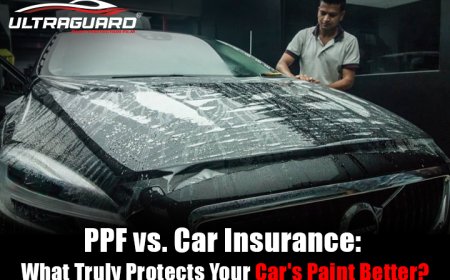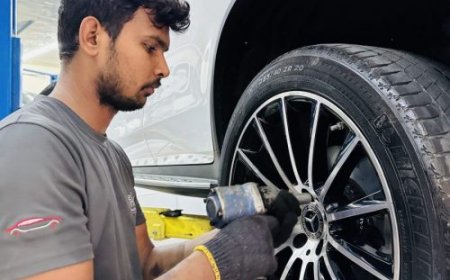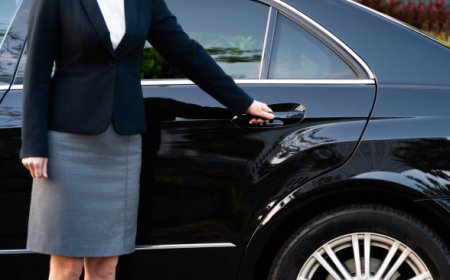Salvage Science: The Art of Resurrecting the Undrivable
Explore how salvage yards breathe new life into old cars. Discover the science behind unwanted car collection and the value of parts that once seemed lost.

Every year, thousands of vehicles across Australia are declared unroadworthy. Some are damaged beyond repair, while others simply age out of use. But not every undrivable car is ready for the scrap heap. Behind rusted panels and flat tyres lies potentialhidden parts, recoverable materials, and sometimes, entire systems that can work again with the right touch.
This is where salvage science comes into play. It is a mix of mechanical skill, safety knowledge, and smart resource use. This blog explores how this practice works, why it matters, and what role it plays in giving broken vehicles another purpose.https://www.carremovalsydney.com.au/
What Salvage Science Means
Salvage science is the method of recovering working parts or materials from cars that are no longer fit for driving. The goal is not just to collect scrap but to recognise what still holds use. It involves assessing the damage, testing parts, and safely removing components for future repair or reuse.
This work is done in places known as salvage yards. Here, trained workers strip down damaged cars, sort the parts, and prepare materials for either resale or recycling. Salvage yards follow a careful process to avoid waste, prevent pollution, and make the most of what remains.
Why This Process Matters
Australia generates over half a million end-of-life vehicles each year. While many are recycled, not all are handled correctly. Improper disposal can lead to leaking fluids, hazardous metals, and environmental damage. Salvaging offers a better option by lowering the demand for new parts and reducing landfill pressure.
The Australian Bureau of Statistics has reported that vehicle-related waste makes up a sizeable portion of metal recycling streams. Proper salvage supports this effort, turning old, broken cars into a source of usable components like engines, gearboxes, alternators, and radiators.
Assessing What Can Be Saved
Not every part of a damaged car is useless. Even when the vehicle itself cannot run, many parts remain untouched or only lightly worn. Technicians start by checking the engine, electrical system, wheels, suspension, and body panels. If a crash only affects one area, the rest may still be suitable for reuse.
Tyres, batteries, mirrors, and even windscreen wipers can often be recovered and sold. Salvage yards also test electronics such as radios, sensors, and climate control units. Before anything leaves the yard, it goes through checks to make sure it works safely.
Giving Cars a Second Life
Some vehicles, while undrivable in their current condition, can be restored. Skilled mechanics or car enthusiasts often purchase wrecks and rebuild them. It might take months, but the result is a working car that returns to the road.
In other cases, parts from several cars are used to build a single working one. Salvage plays a vital role in this process, offering a cost-saving and practical way to source components. While not every project reaches completion, each effort helps reduce waste and saves resources.
Helping the Environment and the Economy
Rescuing parts from old vehicles cuts down on mining and factory production. Manufacturing car parts takes energy and raw materials, including steel, copper, rubber, and plastic. When parts are reused, it lowers the need for new production, reducing carbon emissions and protecting natural resources.
Salvage also supports local jobs. Mechanics, scrap workers, transporters, and warehouse staff are all part of the process. Whether working in cities like Sydney or in regional yards, these roles keep the system running and give value back to broken machines.
The Role of Unwanted Car Collection Services
As the number of unused and broken-down vehicles grows, more landowners and drivers are looking for ways to remove them. Not every person knows what to do with a rusting car sitting in a garage, driveway, or paddock. Services that offer unwanted car collection help solve this issue.
These services make it possible to clear out space and pass the car into the salvage chain. This ensures that the car is not left to rot or pollute the ground. Whether someone owns a wrecked sedan or an old ute, unwanted vehicle removal helps link everyday car owners to the salvage process in a responsible way.
Risks and Challenges
Salvaging does come with risks. Handling cars with crash damage, leaking fluids, or fire risk needs the right skills and safety steps. Workers must wear protective gear, use proper tools, and follow rules to avoid injury or harm to the land.
Not all cars hold reusable parts, and some materials can be toxic. Knowing how to sort, store, and dispose of each part is critical. This is why the salvage trade is not just about pulling partsit requires trained workers who know how to do the job properly.
Stories Behind the Scrap
Some people might look at salvage yards as junk piles, but others see stories. Cars often carry signs of their pastbumper stickers, dented doors, or service tags left behind. A mechanic might find a rare part that helps fix a vintage model. A driver may buy back an old car once thought lost.
This emotional side of salvage cannot be measured, but it adds meaning to the work. Rescuing and reusing even one part can be part of a bigger story, where machines are not just thrown away but allowed a new purpose.
Final Thoughts
Salvage science is about more than breaking down old cars. It is a way to respect what has already been built, to reduce waste, and to make good use of what still works. Every salvaged part keeps another machine running and keeps metal out of landfills.
As more Australians look for ways to deal with broken-down vehicles, understanding the role of salvage becomes more important. Whether through car removal or part recovery, the path to a better future may begin with what we choose to do with the old cars we leave behind.


























